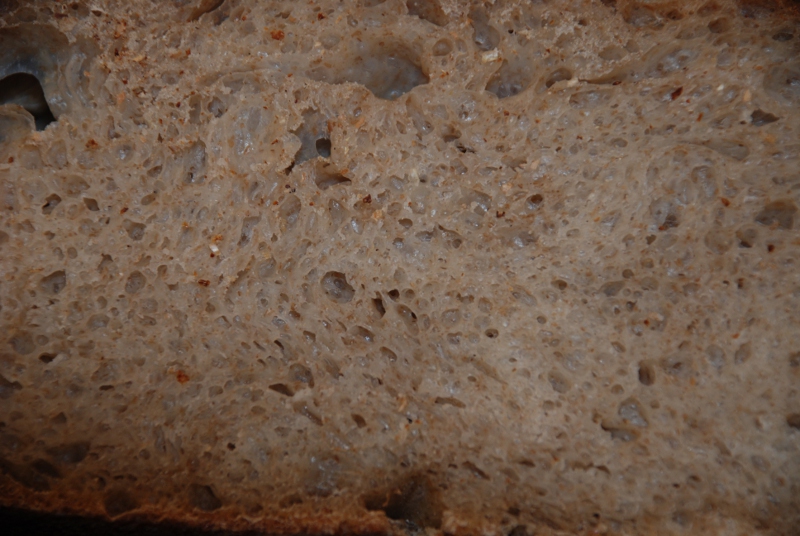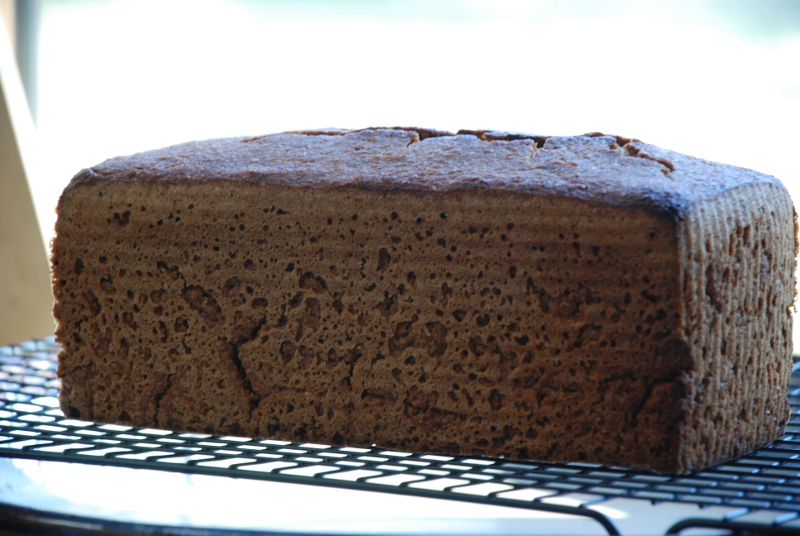
Other people's obsessions can be dull. That's what the back button, the scroll button and the block this user button are for. But if you'll bear with me I have more to say about Borodinsky. First, misunderstanding a suggestion by eliabel, I searched high and low and found a Russian grocery in Allston, MA which carries Kvas. So I made the trek over there, and discovered that they also carried Borodinsky. I bought a loaf, prepared in a sliced sandwich bread format, thinking how good could this be? The answer - extremely good, extremely fresh, extremely coriandery. I consider myself corrected. Then it turns out that eliabel was not suggesting that I buy bottled Kvas, but instead Kvas concentrate. But I had my Kvas, and by golly (remember, this is a well-mannered site) I was going to use it.
The Big Sky Borodinsky
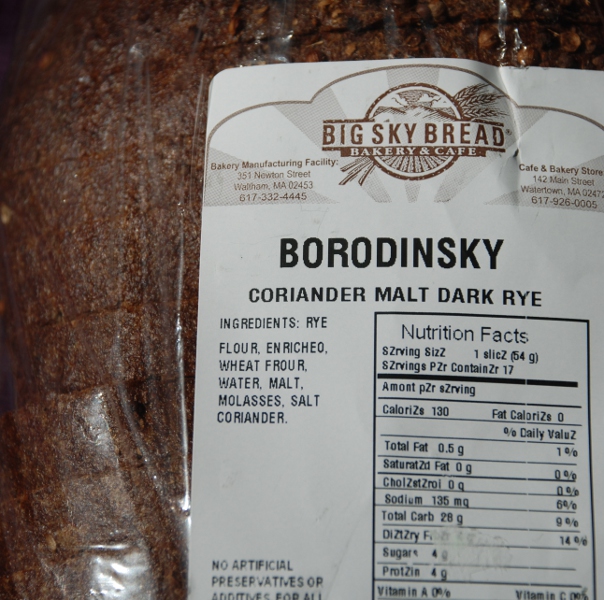
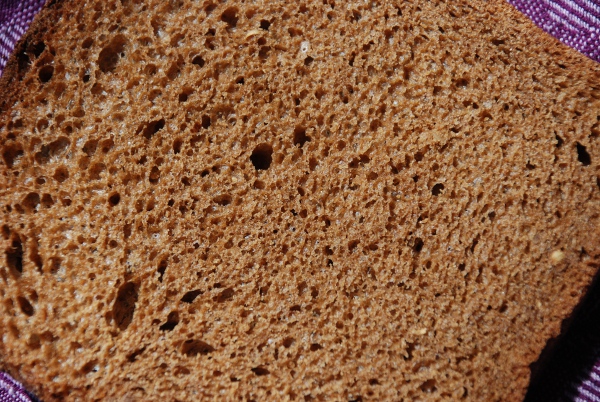
The Kvas - It tasted like bread.
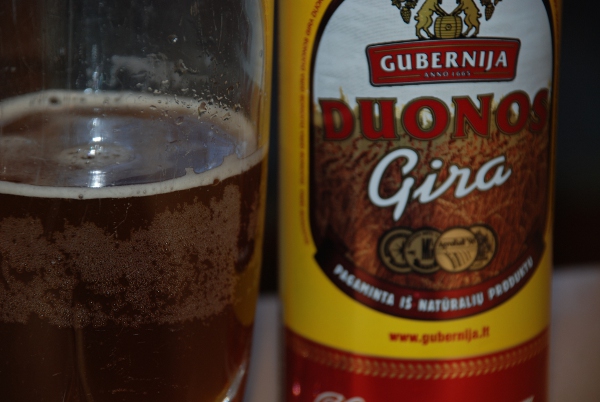
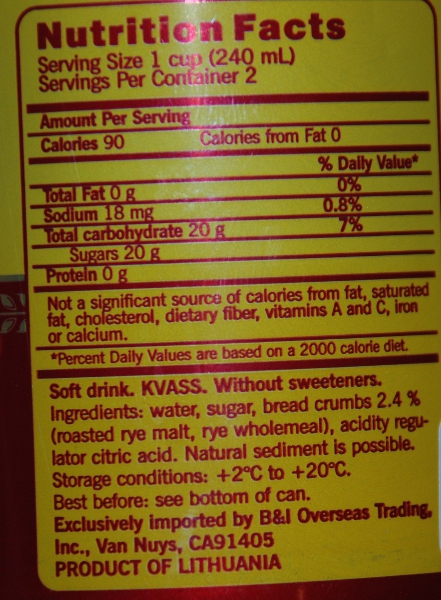
Borodinsky with Kvas
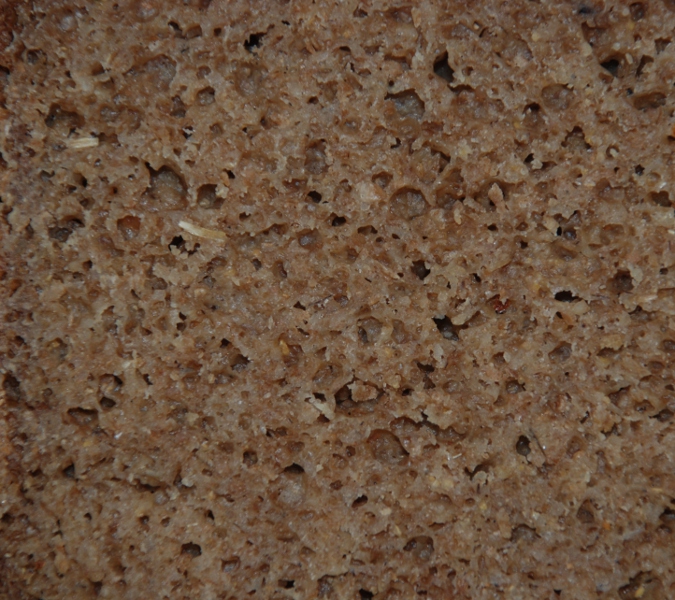
Again I followed Andy's Feb 6, 2012 post, but with enough deviations that it warrants specifying formula and method directly.
| Rye Sour | | 2:00 PM | 9:00 PM | | | |
Seed | 50 | | | | | |
Dark Rye | 12 | | | 12 | | |
Whole Rye | 15 | 75 | 125 | 215 | | |
Water | 23 | 147 | 208 | 378 | 167% | |
| | | | 605 | | |
| | | | | | |
| Scald | | | | | | |
Whole Rye | 104 | | | | | |
Malted Rye | | | | | | |
Molasses | 41 | | | | | |
Boiling Kvas | 272 | | | | | |
Ground coriander | 3 | | | | | |
| 420 | | | | | |
| | | | | | |
| Sponge | | | | | | |
Rye Sour | 552 | | | | | |
Scald | 420 | | | | | |
| 972 | | | | | |
| Final dough | | | | | | |
Whole Rye | 207 | | | | | |
KA Bread Flour | 138 | | | | | |
Salt | 10 | | | | | |
Sponge | 972 | | | | | |
| | | | | | |
| | | | | | |
| Final | Sour | Scald | Total | Percent | |
Whole Rye | 207 | 196 | 104 | 506 | | |
Dark Rye | | 11 | | 11 | | |
KA Bread Flour | 138 | | | 138 | 21% | |
Water | | 345 | | 345 | 94% | |
Kvas | | | 272 | 272 | | |
Malt | | | 0 | 0 | | |
Molasses | | | 41 | 41 | | |
Salt | 10 | | | 10 | | |
Coriander | | | | 3 | | |
Sponge | 972 | | | | | |
| | 552 | 420 | 1327 | | |
Sour factor | 0.91 | | | | | |
Feed starter as above
At second feeding, make the scald
Leave overnight (15 minutes short of 10 hours)
Mix scald and starter
Ferment for just over 4 hours
Add final ingredients - mix by hand until blended
Ferment for 1 hour
Note that paste was very fluffy and aerated at this point
Spoon into greased bread pan. Smooth down with wet spatula
Spray top with water and do so at intervals (Mini's suggestion)
Using spatula, separate top edge of bread from pan (Mini's suggestion)
Cover with Pullman top
Proof for 2 hours 5 minutes
Note -Very bubbly and starting to get holey on top
Oven preheated to 550F for 1 hour - steam pan for last 30 minutes of preheat
Put bread in oven and bring temperature back to 550 (Note I was too worried to cover it for first 15 minutes since it had risen so much during proof - I could have though)
Then reduce to 350F
Bake for 1 hour 15 min (without top for first 15 minutes with top for an hour)
then remove steam pan, remove bread from pan and bake for 30 minutes
Note that uncooked dough weight was 1275 so lost 52g in between steps
Tastewise, and despite the fact that I used canned Kvas rather than roasted rye malt, this was the best yet. Absolutely delicious, with sort of a tart, tangy taste overlaid on the (freshly ground) coriander, malt, and molasses. Addictively delicious. Watch out.

As for the miche, I have been wanting to follow David's SFBI miche for awhile now, but lacked what I thought was a suitable flour. When push came to shove, though, my thinking and flour had deviated too much, so I'll just say that I was inspired by David's miches.
First the flour: I don't seem to be able to find high extraction flour around here, short of milling it myself. So I decided to sift. My first try was unsuccessful and essentially I had whole wheat flour. So I decided to buy a better sieve.

That made a big difference. For this miche, I started with 360g of whole wheat flour, generated 30g of bran, and 30g went missing. So I can't calculate the extraction but it looked good. Then I followed David in using only half high extraction. In my case, I used KA Bread Flour as the other half.
But before I could get to actually making a SFBI miche, I had to pursue a different line of thought. I was somewhat startled the other day, when I made a Pain Au Levain with no Stretch and Fold whatsoever. I am totally imprinted on Hamelman - he says Stretch and Fold, so I Stretch and Fold. But my curiousity was piqued. This time I decided to make up a very wet dough and develop it in the mixer for as long as it took and then again no Stretch and Fold. So I made up an 83% hydration dough and mixed it in my humble Kitchen Aid - first at speed 1 for 35 minutes, and then at speed 2 for 10 minutes, with plenty of scrape downs along the way. The dough came together quite nicely and strongly at the 45 minute mark. Then I let it bulk ferment without touching it for 3.5 hours, and continued on my way.
Given the hazards of working with such wet dough, then I stumbled. I proofed in a big ceramic bowl dusted with flour, but it was too big, so I had to basically drop the dough out of it onto the peel. This compressed the bottom of the loaf a bit. Worse yet, it snagged on the peel when I "slid" it into the oven. To heck with the shape. Despite all that, I think the crumb came out very nicely. Undoubtedly it would have been quite different had I done a shorter mix, and a few stretch and folds. But I kind of like this result.
